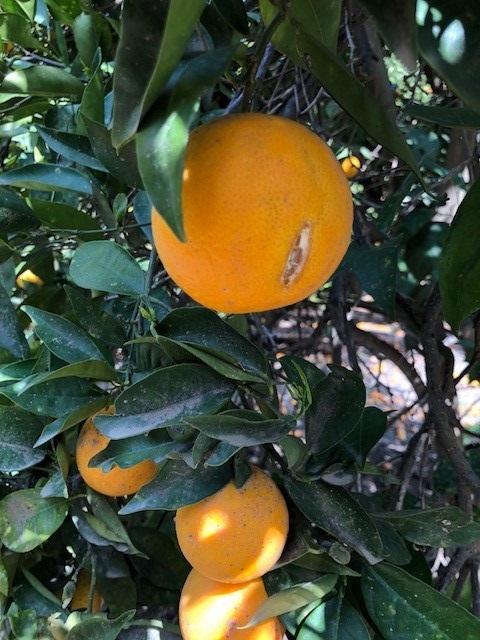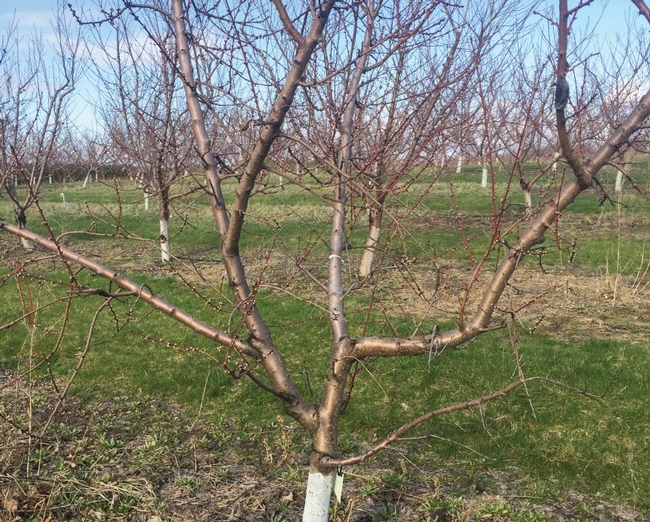So, there are peach trees right now that are flower-less and leaf-less. Wisteria which should have flowered in February is bare. The Royal apricot next door has no flower. The Lombardy poplars and birch in Oxnard don't have leaves. Spring is here, grass is growing, but many deciduous trees are still leafless and haven't flowered? What is going on?
Deciduous fruit trees and many landscape trees like poplar, birch, willow and sycamore, etc. must go through a dormant period each winter in preparation for producing fruit and leaves the following spring and summer. This rest period, also known as a chilling period, is directly related to winter temperatures. For many varieties of trees, the most efficient temperature for chilling is 45°F, with little additional chilling effect at temperatures below 32°F. Brief warm spells in winter have a negative effect — temperatures above 70°F for four or more hours offset any chilling that happened in the previous 24-36 hours.
Once chilling is complete, the trees prepare to wake up from dormancy and bud after a certain amount of warming takes place. The amount of required warming is cumulative, measured by counting the number of degrees each day above a threshold temperature, usually 40°F. This cumulative warming, combined with how well the tree met its chilling requirement over the winter, determines whether a tree buds early or late in the spring.
Tables and charts have been developed for different chilling requirements of fruit trees. The number of hours needed at or below 45°F varies with the type of tree:
- Peach: 400 to 1050 hours
- Apple: 800 to 1100 hours
- Cherry: 1000+ hours
But in coastal Southern California, those hours are never achieved. You need to go to Santa Ynez to get close to those hours. More typically in the Santa Paula, Santa Barbara, San Luis Obispo area, the chilling hours below 45 are close to 200 and lower in many years. Some years there is more, some years less. How temperatures above 70 affect chilling aren't always clear. As a result there are several different ways to account for chilling and none of them work very well for the coast./
Fortunately, we have low-chill varieties of many fruit trees that will produce with lower chilling. So ‘Anna' apple and ‘Royal' apricot do well, and many landscape trees are adapted to the lower winter chilling along the coast and do well. Low chill blueberries thrive to the point that in many years, they don't even go dormant.
This year the warm, cold, warm, cold pattern has mixed trees up. There are some deciduous trees that are doing fine, while others still have not flowered and leafed out. The mix of temperatures is not following the traditional patterns used to calculate chilling requirement. The trees are following their own pattern.
In the last several years in Southern California, winters have seemed shorter and milder, resulting in earlier springs. Trees that have flourished in a location could have decreasing yields in the future, and the favorable locations to grow these fruit trees could shift.
The Fruit and Nut Center at UC Davis has a link to the CIMIS system operated by the CA Dept of Water Resources. The site has various methods of calculating chilling hours, none of them seem adequate though for describing what is happening in the landscape today in Southern California
http://fruitsandnuts.ucdavis.edu/Weather_Services/chilling_accumulation_models/
Look at it to see if you can see a new way of understanding deciduous tree response to the weather.
Just got a call recently that 'Valencia' oranges are splitting. This normally happens to ripe 'Navels' that are over mature and get erratic winter irrigation, especially during drought. In this case, the 'Valencias' are advanced in maturity because of the warm winter, probably advanced by two months. Again erratic watering has probably lead to this splitting.
What a crazy winter.
Splitting coastal 'Valencia' oranges in April, 2018
photo: Peaches without adequate chilling.
Attached Images:

